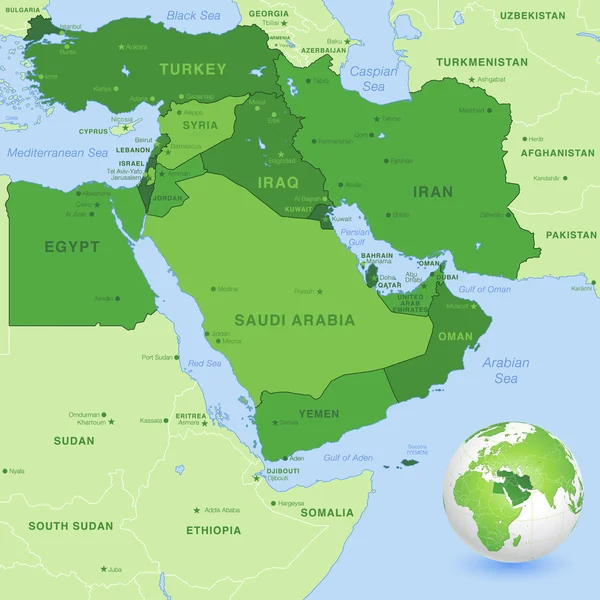Iran, Sudan Reestablish Diplomatic Relations
Move has significant implications for the BRICS in MENA and moves control of the Red Sea and Suez shipping to the Global South
The resumption of diplomatic relations between Iran and Sudan and Iran, was announced in a joint statement on Monday (October 9). Relations had been severed for over seven years. The statement said the two parties have agreed to take the necessary steps to open embassies “in the near future.”
It said: “The Islamic Republic of Iran and the Republic of Sudan decided to resume their diplomatic relations. The two sides also agreed to take the necessary measures to open their embassies in the near future and to exchange official delegations in order to explore ways of expanding cooperation between Tehran and Khartoum.”
The two sides have agreed “to deepen their ties in different areas,” it continued, though no specific details were provided. The decision came after a number of contacts between high-ranking officials in recent months have taken place with dialogues on the “sovereignty, equality, mutual interest and peaceful coexistence” of the two nations.
Sudanese authorities announced their decision to break diplomatic ties with Iran on January 4, 2016, after Iranian protesters stormed the Saudi Arabian embassy in Iran. Khartoum stated that they had a belief that Iran was interfering in the region and spreading religious hatred. Saudi Arabia and Iran patched up their differences and reestablished diplomatic relations earlier this year.
There have been other issues. Sudan, a close ally of Saudi Arabia, had deployed troops to combat the Iran-backed Houthi rebels in neighbouring Yemen, as part of the Saudi coalition. Support for Saudi Arabia was expressed by the Sudanese government, which was led by then-President Omar al-Bashir. Bashir was removed from power in April 2019 as a result of a military coup and was placed under arrest.
Since the Sudanese Army’s coup in 2021, Sudan and Iran have been making gradual progress in improving their relations.

Sudan is a pertinent partner for Iran, as it borders Egypt, Ethiopia, Saudi Arabia, and nearby UAE, all like Iran about to take up BRICS membership from January 2024. The move essentially passes control of the entire Red Sea and Suez Canal shipping to BRICS and BRICS-friendly nations.
Sudan Demographics

Sudan is Africa’s third-largest country by area, and is a member of the League of Arab States (LAS), which also includes Algeria, Bahrain, Comoros, Djibouti, Egypt, Iraq, Jordan, Kuwait, Lebanon, Libya, Mauritania, Morocco, Oman, Palestine, Qatar, Saudi Arabia, Somalia, Sudan, Syria, Tunisia, the United Arab Emirates, and Yemen. Interestingly, the LAS also includes observer nations Brazil and India, both also BRICS members, and Eritrea, an additional Red Sea nation.
Sudan has a population of 49 million and a GDP (PPP) of US$207 billion. Per capita GDP (PPP) is US$4,450. This compares with Iran’s population of 89 million, and GDP (PPP) figures of US$1.692 trillion and per capita income of US$19,548. These differences mean that Iran will be able to shift some manufacturing to Sudan to take advantage of lower production costs.
A Trade Agreement between the two countries had formally been adopted; yet suspended during the diplomatic break. It will be of interest to manufacturing exporters and investors on both sides as to a resumption of this. The Arabic version of their 1999 BIT agreement can be viewed here.
The two countries also signed a 2004 Double Tax Treaty which is also capable of reducing taxes in bilateral services income.
Due to the seven-year abeyance of relations, bilateral trade has been substantially reduced. In 2019, this amounted to just US$85 million, with the bulk of this being Iranian energy-related exports. Sudan’s most important export is gold (70% of total exports) followed by livestock (25%), along with oil, arabic gum, and cotton. Sudan’s main import partners today are China (78% of the total) followed by the UAE, Japan, Saudi Arabia and Italy.
The rapprochement of bilateral relations between Iran and Sudan will undoubtedly create a significant resurgence of trade, while geopolitically this has sewn up Red Sea shipping to the control of the aligned Arabic powers and their BRICS allies. It could also lead to Sudan joining the Shanghai Cooperation Organisation (SCO) as a dialogue partner. Iran is a full member of the SCO while other Arabic dialogue partners include Bahrain, Egypt, Kuwait, Qatar, Saudi Arabia, and the UAE along with regionally friendly Turkiye, also slated to be a future BRICS member from possibly 2015.
With Iran’s involvement as a key hub for the INSTC transport network, the potential to expand this into North Africa via the Red Sea Ports has also taken a further step towards connecting China, Central Asia and Russia to the MENA region.
Chris Devonshire-Ellis is the Chairman of Dezan Shira & Associates. He may be reached via asia@dezshira.com
Related Reading
- Iran To Assist Azerbaijan Develop East Zangezur Railway Infrastructure and Astara Cargo Terminal
- First Russian Direct Transit Freight Train Arrives In Saudi Arabia
 BRICS & MENA: China’s Growing Influence In The Middle East: New Report
BRICS & MENA: China’s Growing Influence In The Middle East: New Report
About Us
Middle East Briefing is one of five regional publications under the Asia Briefing brand. It is supported by Dezan Shira & Associates, a pan-Asia, multi-disciplinary professional services firm that assists foreign investors throughout Asia, including through offices in Dubai (UAE), China, India, Vietnam, Singapore, Indonesia, Italy, Germany, and USA. We also have partner firms in Malaysia, Bangladesh, the Philippines, Thailand, and Australia.
For support with establishing a business in the Middle East, or for assistance in analyzing and entering markets elsewhere in Asia, please contact us at dubai@dezshira.com or visit us at www.dezshira.com. To subscribe for content products from the Middle East Briefing, please click here.
- Previous Article UAE, Vietnam, Seek To Boost Bilateral Trade
- Next Article UAE, Georgia Sign CEPA Trade Agreement


